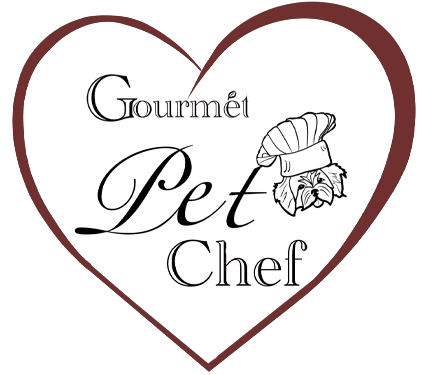When it comes to fueling your pup’s zoomies, tail wags, and curious adventures around the backyard, one nutrient reigns supreme: protein. It’s the not-so-secret sauce behind strong muscles, a shiny coat, and boundless energy.
But let’s be honest—figuring out how much protein your dog needs can feel like decoding a secret canine language. There’s a whirlwind of info out there, from kibble bags to Reddit threads, and it’s easy to get overwhelmed.
So, let’s make this simple, bite-sized, and maybe even a little fun—because good nutrition doesn’t have to be complicated (or boring).
Why Protein Matters So Much to Dogs
Protein builds and repairs tissues, supports immune function, and provides energy when carbs are scarce.
And since dogs are natural carnivores at heart (even if they have a soft spot for the occasional dropped piece of toast), their bodies are wired to thrive on high-quality animal protein.
Think of it like this: if your dog were a car, protein would be the high-octane fuel. Without enough of it, your pup might still run—but it’ll be sluggish, underpowered, and possibly prone to more “check engine” moments at the vet.
Not All Dogs Are Built the Same (and Neither Are Their Protein Needs)
Here’s where things get interesting. Your dog’s protein needs depend on a bunch of factors:
- Age: Puppies are like little growth machines. They need more protein to build muscle, bones, and everything else at lightning speed. Senior dogs, meanwhile, may also benefit from more protein to prevent muscle loss.
- Activity Level: A couch-loving pug has very different needs than a frisbee-obsessed border collie. The more active your dog, the more protein they burn through.
- Size and Breed: Larger dogs generally need more food (and more protein), but even among breeds, the needs can vary. Working breeds like Huskies or German Shepherds often need a protein boost compared to more sedentary companions.
- Health Status: Some conditions—like kidney disease—can impact how much protein a dog should have. So, if your vet has flagged anything, always factor that in.
It’s not a one-size-fits-all situation. And unfortunately, a lot of commercial dog food plays the guessing game, lumping all dogs into the same protein percentage.
So… What’s the Magic Number?
Okay, so how much protein does your dog need in actual, measurable terms?
According to the Association of American Feed Control Officials (AAFCO), adult dogs should have at least 18% crude protein in their food, while puppies and pregnant or nursing dogs need at least 22.5%.
But—and this is a big one—those are just minimums. Many vets and canine nutritionists recommend higher levels, especially for active dogs or those on homemade or fresh food diets.
Think 25–30% for most healthy adult dogs and even more for super-sporty types.
The quality of the protein also matters. Chicken beaks technically count as protein, but you probably don’t want that in your pup’s bowl.
Look for real, recognizable meats: chicken, turkey, beef, salmon, lamb—you get the idea. If it sounds like something you’d cook up in your kitchen, it’s probably a better source.
Signs Your Dog Might Not Be Getting Enough
Dogs can’t say, “Hey, I think I’m low on protein today,” but they do have ways of letting you know. Here’s how you can spot nutritional deficiencies in your pup:
- Low energy or lethargy (the dog version of Monday morning blues)
- Thinning fur or excessive shedding
- Weight loss or poor muscle tone
- Frequent illnesses or slow healing
- Poor appetite (ironically, sometimes due to lack of nutrients)
If your pup’s normally bounding through the house like a four-legged cannonball and suddenly seems “meh,” their diet might be worth a closer look.
Can You Go Overboard?
Interestingly, too much protein usually isn’t a problem for healthy dogs. Their bodies are great at processing and flushing out excess protein.
That said, dogs with certain health issues—especially kidney problems—may need tailored diets with lower protein content.
That’s why it’s always smart to chat with your vet before making major food changes. They can help you navigate whether your pup needs a little protein boost—or just a better quality source.
Fresh, Real Food = Real Results
You know how you feel after eating a real, home-cooked meal versus, say, a gas station sandwich? Yeah, dogs feel that difference, too.
Fresh food made with whole ingredients tends to be more bioavailable, meaning your dog absorbs more of the nutrients instead of sending them straight through the digestive conveyor belt. That includes protein.
So, when you’re feeding fresh chicken breast or gently cooked salmon—rather than dried, mystery-meat kibble—you’re giving your dog’s body what it recognizes as food. That means better digestion, more energy, and (bonus!) smaller poops. Yep, smaller. Because there’s less filler.
Tail-End Thoughts: Keep That Bowl Balanced
Dogs need more than just protein, of course. Fats, carbs, vitamins, minerals—it all plays a role. But if protein is out of whack, everything else starts wobbling. It’s the foundation of your dog’s diet and the one you want to get right.
So whether you’re dealing with a sprightly puppy, a chill senior, or a hyperactive park ranger in a Labrador’s body, make sure protein isn’t just present—it’s purposeful and high quality.
One Last Bite (Literally): Let Gourmet Pet Chef Do the Heavy Lifting
If you’re unsure of your cooking skills and don’t want to guess how much protein your dog needs every day, Gourmet Pet Chef has you covered!
We don’t do guesswork—we do fresh, species-appropriate meals such as chef-prepared chicken & rice with veggies that are actually tailored to your dog’s unique needs.
No by-products, no mystery meats—just real food, the way nature (and your dog’s nose) intended.
Let us take care of the measuring and balancing so you can just focus on what matters most: belly rubs, long walks, and maybe sharing a carrot or two.Contact us today if you have questions about our pet-friendly gourmet meals!
 Skip to content
Skip to content


